Top 10 Mountain Books: Himalayanism

A selection of mountain literature, a MUST for your library. that will take you to the heart of the Himalayas. Ten recommended mountain books, classics of expeditionary Himalayanism and some best-sellers.
1.- Annapurna, First Ochomil - The Great Adventure
Maurice Herzog
On the third of June 1950, Maurice Herzog and Louis Lachenal reached the Annapurna summit, becoming the first to do so. the first human beings to summit a mountain of more than eight thousand metres, narrowly escaping death.
In the following months, while recovering in hospital from his terrible amputations, (which would leave him with his fingers and toes) Herzog dictated Annapurna first eight-thousander, one of the greatest works of expeditionary mountain literature.
It is a work that launched many young people into the mountains and made them dream of the great peaks of the Himalayas. This French expedition symbolises the great values of the golden age of Himalayan expeditionary climbing.
2.- Conquistadores De Lo Inutil, Los
Lionel Terray
For many, the best mountain book. A must in our library. Lionel Terray was one of the great pioneers of difficult mountaineering. A great figure of the golden age of expeditionary Himalayanism, he played a decisive role in the 1950 Annapurna expedition. It was from then on that his activity went beyond the Alps to undertake several difficult first ascents in the Andes, Alaska and the Himalayas (Fitz Roy and Makalu among others). For Messner "one of the most outstanding figures in the history of mountaineering".
3.- Climbers of freedom. The golden age of Polish Himalayanism.
Bernadette McDonald
Winner of the most important mountain literature awards -The 2012 American Alpine Club Literary Prize (USA); the 2012 Banff Mountain Festival Munday Prize (Canada) and the 2011 Kendal Mountain Festival Boardman Tasker Award (UK) - tells the story of a group of extraordinary Polish climbers including Jerzy Kukuczka, Voytek Kurtyka, Wanda Rutkiewicz, Krzysztof Wielicki, Andrzej Zawada and Artur Hajzer who emerged from under the cloak of oppression that followed World War II to become the vanguard of Himalayan climbing.
4.- My vertical world
Jerzy Kukuczka
Jerzy Kukuczka, the great Polish climber familiarly known as Jurek, was a man with a voracious appetite for the high mountains: he climbed all fourteen eight-thousanders in eight years, completing his project only a few months after Reinhold Messner had done it first. But the merit of Kukuczka, perhaps one of the most innovative and daring mountaineers of all time, lies above all in the style of these ascents, as well as in the enormous difficulties he had to overcome to carry out his expeditions.
My Vertical World, tells the incredible story of a modest and familiar man.who dreams of the high peaks of the Himalayas. Far from being a mere mountaineering chronicle of the time when the author was conquering the successive giants of the Himalayas and Karakorum (1979-1987), this is a deeply human text, written in the form of memories, sometimes very personal and intimate. Kukczka conveys with astonishing sincerity his feelings at the most difficult moments of his career, portrays his friends - some of them renowned Himalayan climbers, such as Voytek Kurtyka, Krzysztof Wielicki or Wanda Rutkiewicz - and displays an admirable sense of humour when talking about the harsh socio-political reality that surrounded him.
5.- K2 The infinite knot
Kurt Diemberger
K2 The Infinite Knot is one of the great classics of mountain literature. With this new edition - twenty-two years after its first publication in Spain - we relive the story of a powerful fascination that forever links the destiny of two people to a beautiful and inaccessible mountain. In 1957, young Kurt saw K2 for the first time from the base of Broad Peak. From then on, his whole life revolved around the magic of the Chogori. After a few unsuccessful attempts, he returned in 1986 with Julie Tullis in the hope of finally reaching the summit. But 1986 is a tragic year on K2. An unexpected storm trapped seven people at an altitude of 8,000 metres for several days. Kurt and Julie, having fulfilled their dream of reaching the summit they had longed for for years, fight for their lives in an unequal battle against the forces of nature. After a tragic descent, only two people, Kurt and Willy Bauer, reach base camp, amazingly managing to survive the mountain's wrath.
6.- From Tyrol to Nanga Parbat
Herman Buhl
Hermann Buhl, iconoclast and provocateur, mountaineer of prodigious talent, is considered today as the most outstanding precursor of modern Himalayanism. His solo ascent of Nanga Parbat (8,125 m) in 1953, just a few days after the Hillary-Tenzing team had reached the summit of Everest, confirms a climber out of the ordinary. This "man-eating" mountain, which has taken its toll on the cream of European mountaineers from Mummery to Welzenbach, succumbed to Buhl's determination as he crowned its summit.
for the first time in history. The Tyrolean conquered the summit after a solo night climb and during the descent he made a bivouac at eight thousand metres, without a tent or sleeping bag, without food or adequate clothing, thus giving rise to one of the great feats of the conquest of the Himalayas. From the Tyrol to Nanga Parbat, is his fascinating autobiography and in which we also discover a passionate and overflowing personality, free from any kind of pattern. The carefree daring of his adventures will immediately captivate the reader, who will get to know the real Hermann through these pages: a simple, pure man, who always maintained an exemplary modesty, even when his exploits brought the mountaineering world of his time to its knees.
Everest. Because it is there
Ion Berasategui.
DESNIVEL Literature Prize 2017.
Did Mallory and Irvine succeed in being the first in conquering Everest in 1924? In an attempt to preserve the soul and spirit of that expedition, this novel offers a personal version of the adventures of those daring men who, in search of glory, faced the unknown. At the same time, nine decades later, two young mountaineers set off for Tibet with the north face of Everest as their goal. Their expedition, in pure alpine style, has nothing to do with the odyssey faced by those intrepid British pioneers. Despite being separated by so many years, both expeditions converge at a point that could unite them forever in the annals of mountaineering.
8.- Mal De Alura
Jon Krakauer.
Altitude sickness has become a international best sellerone of the three finalists for the 1998 Pulitzer Prize in the non-fiction category.
In 1996, Krakauer was sent by Outside magazine to Everest as part of a commercial expedition to write a report on the increasing exploitation of the world's highest mountain, but after reaching the summit, a tragedy occurred during the descent that resulted in several deaths. After the publication in the magazine of the article in which Krakauer tells his vision of the events, the controversy was unleashed. A year later, after a review of the events, he published Mal de Altura (Into Thin Air).
Everest 1996. Chronicle of an impossible rescue.
Anatoli Bukreev and De Walt Weston
For the guide Anatoli Bukreev, Krakauer's book presented a distorted version of what happened, which is why he decided to publish his own version of events in the book "The Climb", translated in Spain by Desnivel as "Everest 1996".
Well written, highly recommended if you want to get a fuller picture of what happened that day.
10.- Under the skies of Asia
Iñaki Ochoa de Olza
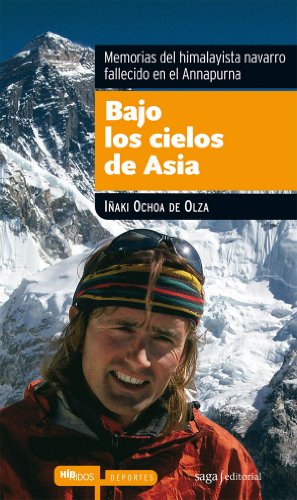
Under the skies of Asia is the first-person account of the great eight-thousander from Navarre, Iñaki Ochoa de Olza. He himself left this work ready for publication just before leaving for Annapurna, where he died of a cerebral oedema that kept him at 7400m (23/05/2008).
Under the skies of Asia is a book that manages to hook you from the first line, written in direct, agile, spontaneous language, sometimes with humour, Iñaki transmits with great passion his experiences on the highest roofs of the planet, from when he attempted Kanchenjunga (1990) at the age of 22 to K2 in 2004, passing through his beginnings as a mountaineer. His philosophy of life, his search for freedom, the transparency of his character and his humanity and humility deeply marked those who knew him. This book manages, with great naturalness, to transmit all this, which makes it an essential work for any lover of the mountains and Himalayas.
Don't miss any adventure in the Pyrenees!


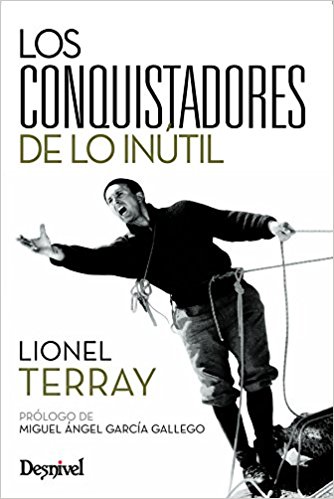

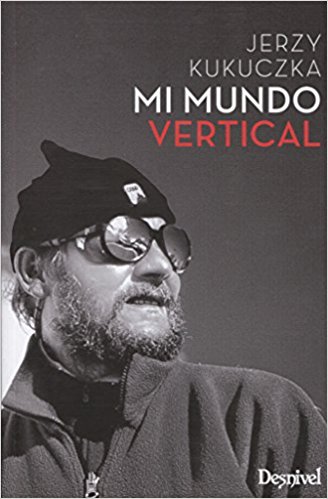
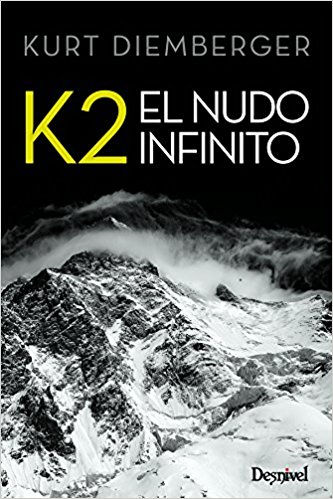
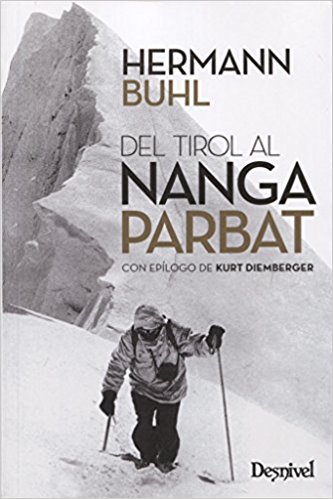

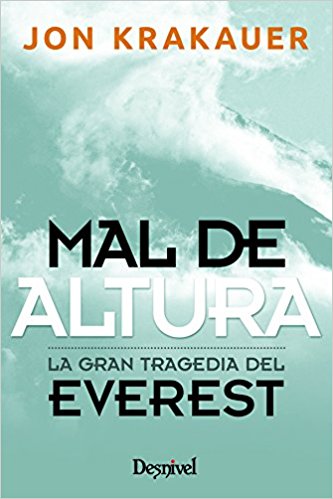
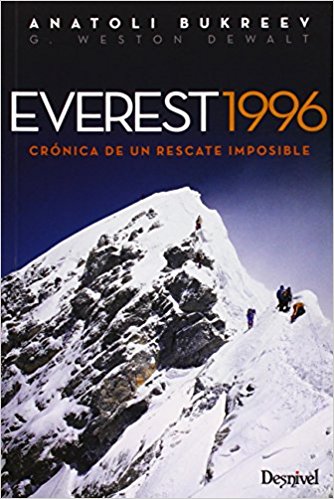
Very interesting....:)!
...I don't believe there is no Reinhold Messner! In any case, good article! 🙂
Let's go for the 10+1 !!!! Which one would you recommend? 🙂
You're missing another staple: Joe Simpson's "Touching the Void".
You are absolutely right, a classic of mountain literature. We are going to save it for a more general article, as it tells of the adventures in the Peruvian Andes, and here we have stuck to the Himalayas.
A classic!